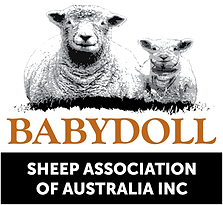Legislation and Biosecurity

Legislation and Biosecurity
Property Identification Code (PIC)
A Property Identification Code (PIC) is an eight-character code allocated by the Department of Primary Industries (DPI) or an equivalent authority in each state or territory to identify a livestock-producing property. Producers must have a PIC to move livestock on and off a property; it forms the basis of Australia’s food safety and traceability programs.
There are differences between states and territories in how PICs are managed. In some states, amalgamation of separate PICs owned by the same entity, into a single PIC, is allowed. In other states, one property can be issued multiple PICs if there are livestock owned by multiple entities on the property. It is important to understand the requirements for your state or territory.
To check requirements or apply for a PIC. please click on your State's link below:
VICTORIA:
https://pic.agriculture.vic.gov.au/
NEW SOUTH WALES:
https://www.lls.nsw.gov.au/livestock/pics
QUEENSLAND:
https://www.business.qld.gov.au/industries/farms-fishing-forestry/agriculture/land-management/pic
SOUTH AUSTRALIA:
http://pir.sa.gov.au/biosecurity/animal_health/property_identification_code_pic
WESTERN AUSTRALIA:
https://www.agric.wa.gov.au/livestock-ownership
TASMANIA:
NORTHERN TERRITORY:
https://nt.gov.au/industry/agriculture/livestock/get-a-property-identification-code
AUSTRALIAN CAPITAL TERRITORY:
Ovine Brucellosis (OB)
Ovine Brucellosis (OB) is a highly infectious disease of sheep which causes infertility in rams and early embryonic death of lambs. OB has the potential to devastate the Babydoll sheep breed with its limited numbers and a narrow gene pool. It is also heartbreaking. There is no cure. In rams, OB causes lumps and swelling in the scrotum and is diagnosed with a blood test. Ewes infected by rams at mating usually show no ill-health.
Animals testing positive are euthanased. Once detected in a flock, it can then take years to eradicate. The introduction of Brucellosis typically causes a 30-40% reduction in pregnancy rates in a normal six-week joining. Not many studs can afford such infertility.
Of particular concern in newer, small Babydoll flocks is that a reduction in fertility may take even longer to detect because of the lack of previous records of lambing percentages with which to compare. With buyers and sellers unaware of the serious risk it poses and how easily it is transmitted, this means that Babydolls are especially vulnerable to OB passing from flock to flock and OB becoming endemic across the breed.
The Australian Stud Sheep Breeders Association (ASSBA) has now mandated that all ASSBA members become Ovine Brucellosis accredited within the next two years. It is already a requirement by ASSBA that membership of ASSBA requires that any rams transferred to a new owner come from a flock which is Brucellosis Accredited or is accompanied by an individual negative Brucellosis certificate.
Our BSAA committee urges breeders who are not Accredited to do so as soon as possible. The sooner it’s done, the sooner breeders secure the health of precious breeding stock and play their part in to protecting the reputation and future of the breed.
Accreditation means that not only do Babydoll breeders operate under strict and transparent protocols that protect the health of our own sheep but also guarantee we won’t be infecting the flocks of anyone who buys our sheep. It is not unknown for the sale of OB infected sheep to end up in expensive legal action.
Ovine Brucellosis-Free Accreditation schemes are administered by each State’s primary industry department. Their websites have full details of the disease and the accreditation process.
A comprehensive overview and State links are at: